Chiangmai is well known as the arts and crafts centre of Thailand. Shops and studios specializing in wood, ceramics, textiles, paper, soaps & oils and a variety of precious metals can be found in and around the city. Head out in any direction and you are certain to run across at least one artsy site where you will be tempted to part with your cash! There are numerous tours available to tourists who are visiting and would like to do a little shopping to satisfy their craving for handmade items. Baan Celadon is only one of such places and a good spot to watch traditional pottery in the making.
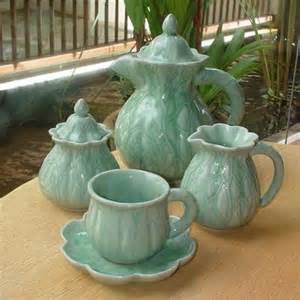 If you try to find the Baan Celadon locations on your own, it can get a little confusing, as we found out when we headed out on our new scooter into the countryside outside of Chiangmai. It turns out that there are actually two locations. We ended up finding the original location that is now mostly a group of show rooms that display a wide variety of the celadon wares. There is a small studio in the back where visitors can watch pottery being thrown on the wheel and a small number of women hand-decorating a variety of pieces with intricate carving and underglazes. It was still well worth the trip just to see the incredible selection on display and chat with one of the agents about the production of celadon in Chiangmai.
If you try to find the Baan Celadon locations on your own, it can get a little confusing, as we found out when we headed out on our new scooter into the countryside outside of Chiangmai. It turns out that there are actually two locations. We ended up finding the original location that is now mostly a group of show rooms that display a wide variety of the celadon wares. There is a small studio in the back where visitors can watch pottery being thrown on the wheel and a small number of women hand-decorating a variety of pieces with intricate carving and underglazes. It was still well worth the trip just to see the incredible selection on display and chat with one of the agents about the production of celadon in Chiangmai.
The company has outgrown this original site that was opened in 1989 by two local Thai business women. The main factory headquarters are now located in Doi Saket, a 15 or 20 minute drive through the countryside from Chiangmai. We also managed to find this spot the next day but it was closed. The grounds themselves are beautiful and we will return in the future to check out the rest.
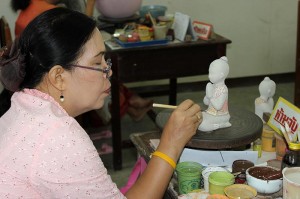 Celadon pottery actually originated in China over one thousand years ago and was being produced in Thailand by the beginning of the fourteenth century. Although low-fired earthenware has a long history in Chiangmai, it wasn’t until 1950 that a group of immigrants from Myanmar began producing celadon pottery in the old city with traditional wood-fired kilns. At that time, most of the work produced was for functional purposes unlike the wide selection of decorative items available today.
Celadon pottery actually originated in China over one thousand years ago and was being produced in Thailand by the beginning of the fourteenth century. Although low-fired earthenware has a long history in Chiangmai, it wasn’t until 1950 that a group of immigrants from Myanmar began producing celadon pottery in the old city with traditional wood-fired kilns. At that time, most of the work produced was for functional purposes unlike the wide selection of decorative items available today.
Celadon is found in a variety of colors including various shades of blue and grey, but is best known for its various hues of green that were originally meant to mimic jade. At Baan Celadon, all the ingredients are found locally and the glaze is produced from ash made from a couple of different Thai tree varieties. It is the iron in the glaze that gives celadon its rich green color. In the shop, there was a small display of the woods used and the ash produced. It is interesting that the clay is actually black to begin with but turns white during the firings.
 Being an ex-potter, it was great walking around looking at the huge selection of beautiful items in the showrooms, as well as checking out the studios in the back. The salespeople were very friendly and not pushy at all. Walking through the buildings and around the grounds was a relaxing way to spend an hour or so. I noticed on their website that you can actually pay to make your own pot on the wheel and then decorate it and glaze it. I would love to see how people manage to do this since making anything on the wheel takes a lot more than one or two hours of practice! It would be worth going back to the other site just to check this out.
Being an ex-potter, it was great walking around looking at the huge selection of beautiful items in the showrooms, as well as checking out the studios in the back. The salespeople were very friendly and not pushy at all. Walking through the buildings and around the grounds was a relaxing way to spend an hour or so. I noticed on their website that you can actually pay to make your own pot on the wheel and then decorate it and glaze it. I would love to see how people manage to do this since making anything on the wheel takes a lot more than one or two hours of practice! It would be worth going back to the other site just to check this out.
I won’t go into the details of the actual production but, suffice it to say that there is a mixture of hand-thrown, cast and jiggered items that end up on the sales floor. Most products are either meticulously hand-painted with underglaze or intricately carved. Both these decorating techniques have long been associated with the production of celadon since they both occur under the glaze surface. Visit any museum that has a historic celadon collection and you will see that the same techniques were employed hundreds of years ago throughout Asia.
Anyone that travels to Chiangmai should definitely try to take a tour of these studios. In the same area as Baan Celadon, you will find a large number of places specializing in many different art forms, including silver, textiles, and hand-made paper umbrellas. There is actually an handcraft village nearby that has an entire street of shops specializing in a wide variety of different crafts. Don’t feel like you have to buy anything; it is interesting just walking around and watching the artisans at work.
For more information on Baan Celadon, you can check out their website here.
Here is a short video that provides some details on the studio and production process.
[youtube]tOgAk0TC5FU[/youtube]


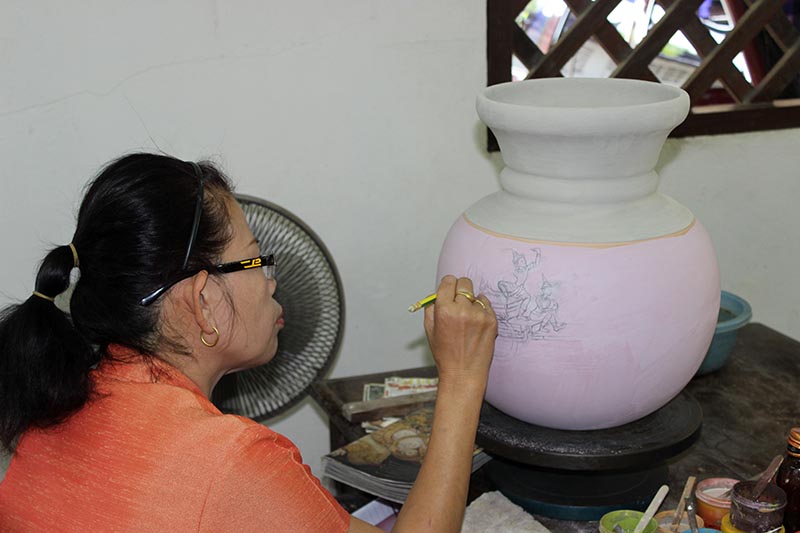
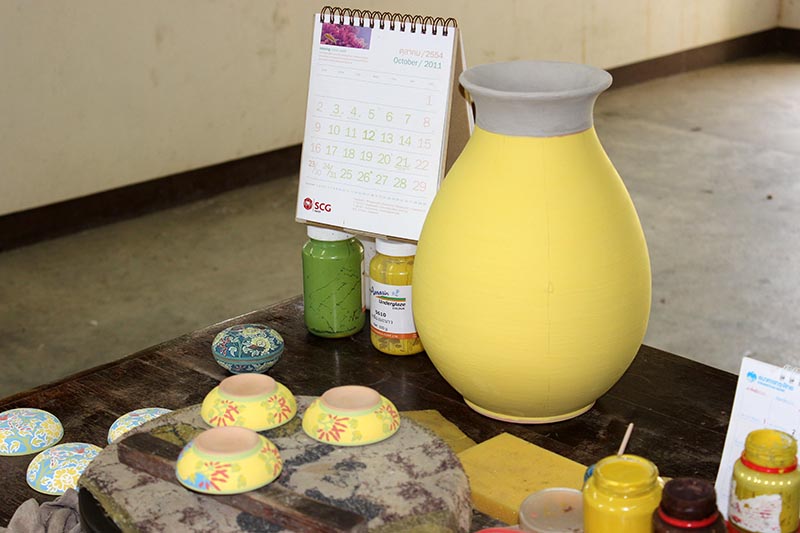
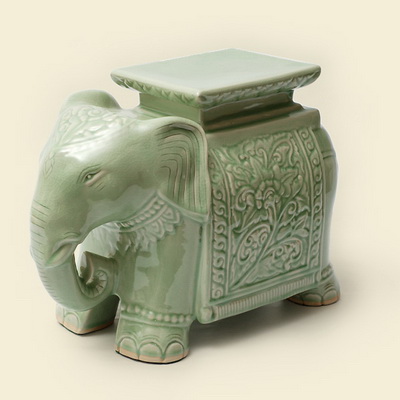
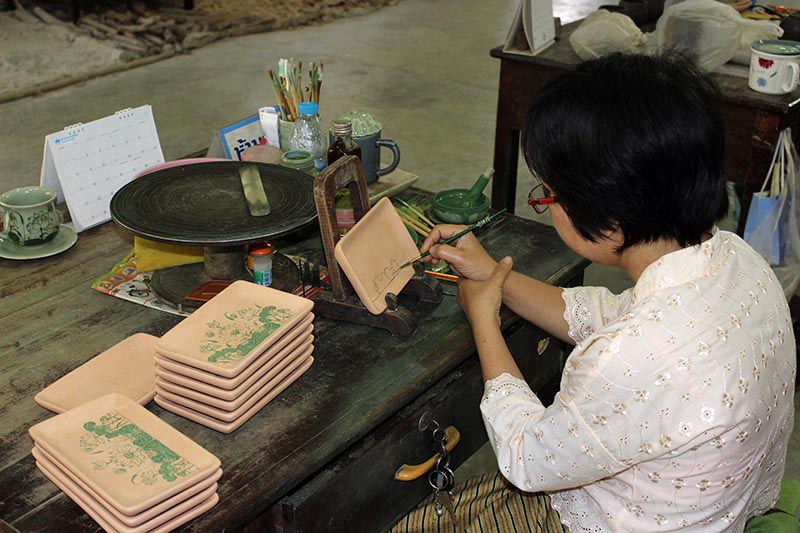
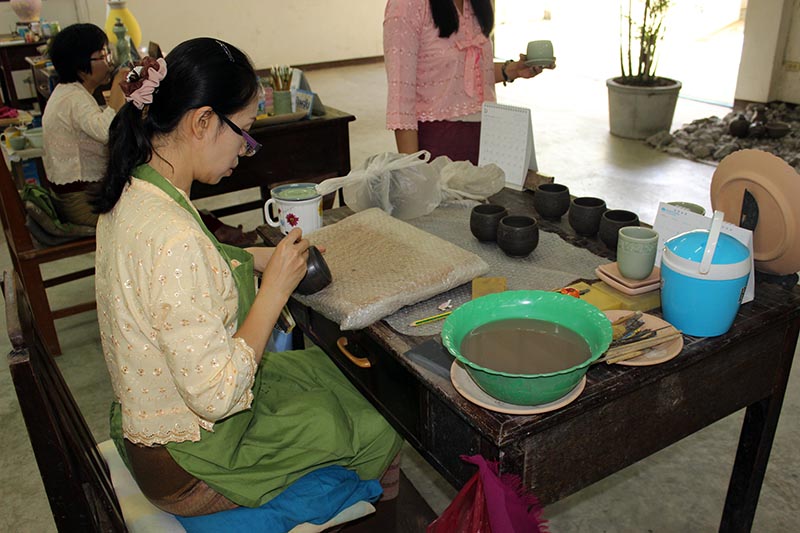
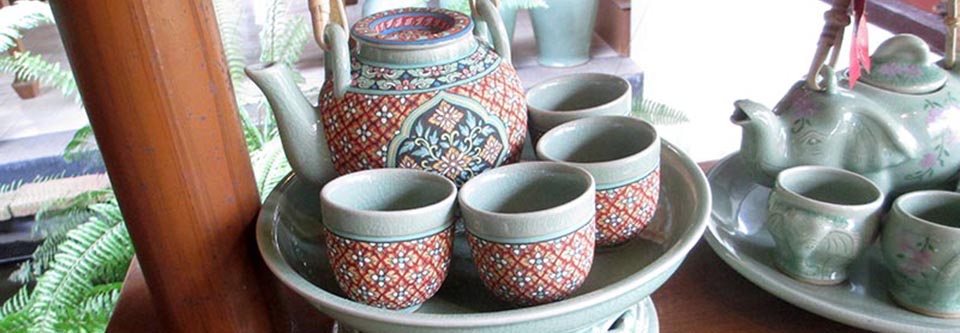
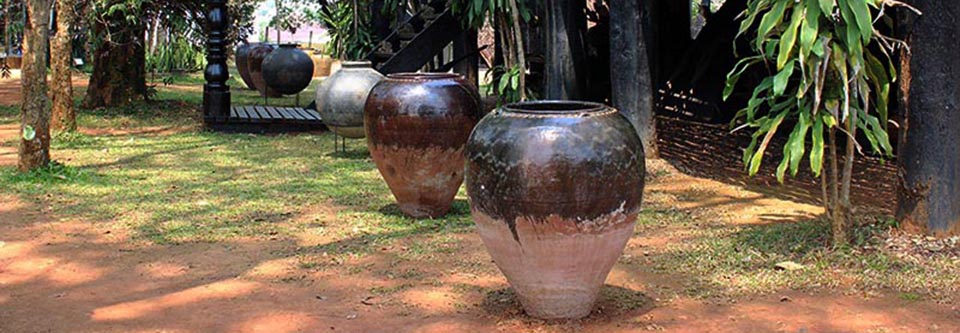
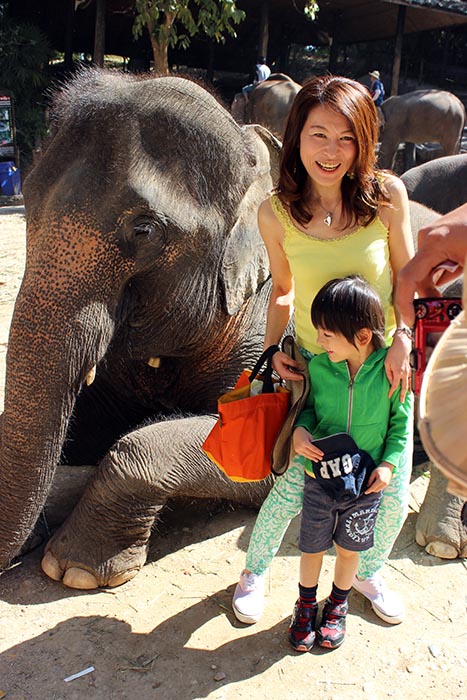
Did u break the china in the picture?
No, but you should have seen the family that got there before us. They had no control of their kids!